LE CUL MÉCANIQUE by Moses Langtree
Catalogue essay from the exhibition 04 October — 28 October
2006
Esa Jäske Gallery, Sydney
|
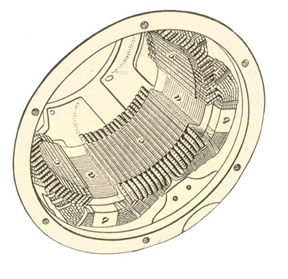 |
Fallen
Skateboarder (detail)
2006, ink and collage on paper, 76 x 56 cm
Signed and inscribed reverse with title, date, catalogue no.
MMXXVI |
|
Le
cul mécanique
The mechanical arse
Schranzer’s creative expressions naturally (and convincingly)
convolve and oscillate. His subjects weave and intertwine, or
sit at opposite ends of a room; his various protagonists and personae
gain episodic or periodic favour. Formal appearances fluctuate
as a minimal, abstract aesthetic seeks voice alongside semi-figurations,
or as we find in Le cul mécanique, his more figurative
impulses. Yet, in whatever formal, material or technical way his
drawings, collages, paintings, or objects present themselves,
whichever play, turn or bent of mind directs them, they are, undoubtedly,
united by constant themes — from the esoteric to the sexual
— and by an individual, reduced and linear style. Indeed,
evident over many years is his signature use of an 'industrial'
line and form; a way with and a reliance on
line and edge that preferences the ‘clean and clear’
over a painterly, expressive approach.
In Le cul mécanique the viewer is presented with
a reduced yet figurative modality, and as Schranzer’s focus
is the male body — not culturally and politically allegorised,
but personally and sexually charged — it does beg the question
of its appropriateness; whether his ascetic style linked to the
vernacular of architectural drawing is counter-expressive, and
what its purpose and meaning might be. Where the erotic drawings
of artists such as Jean Cocteau and Jean Boullet are rich in freehand
elements, nuance, ‘sensuality’ and ‘candour’
of line, Schranzer never loses his controlling interest in where
a line leads and when it stops, and rarely allows the line to
deviate in weight and emphasis, limiting its emotive and expressive
potential. There is, in stark contrast to Cocteau’s or Boullet’s
drawings, no sense of warm flesh, raw meat, hot semen, or romantic
sexual possibility: no bedfellow invoked.
In William Burroughs’ Soft Machine one reads of
“street boys… [with] smiles and translucent amber
flesh, aromatic jasmine excrement, pubic hairs that cut needles
of pleasure…” and “asshole[s] fluttering like
a vibrator,” but no such street boys are to be found in
Schranzer’s work. There is eye-candy and there are arse-holes
to be sure, but Schranzer’s young men don’t speak
of a Dionysian spirit, an organic fecundity; rather, on appearance
they are relatively ‘cool’ — removed, largely
travertine-fleshed, oiled, machined — despite what pleasures
they seem to offer. Again quoting Burroughs: “So the boy
is rebuilt [I’ll add, with a mechanical arse] and
gives me the eye and there he is again walking around some day
later across the street and ‘no dice’ flickered across
his face….”(1) Georges Bataille’s phrase also
comes to mind, that “naturally, love’s the most distant
possibility.”(2) Such a ‘detached’ line is surely
an invocation of a lack of interaction; a physical detachment
between the object of desire and the artist, or subject with viewer.
From this we can at least opine that — through his line
work and aesthetic frameworks — Schranzer is not attempting
to primarily arouse the ‘senses’, despite his naked
subjects! We might divine that his youths are not simply sexual
conduits and — in the light of their mechanical arses —
sexual apertures, but psychological channels; or, returning to
our opening line, that there are oscillations present,
even an ambiguity between the psychological and sexual.
|
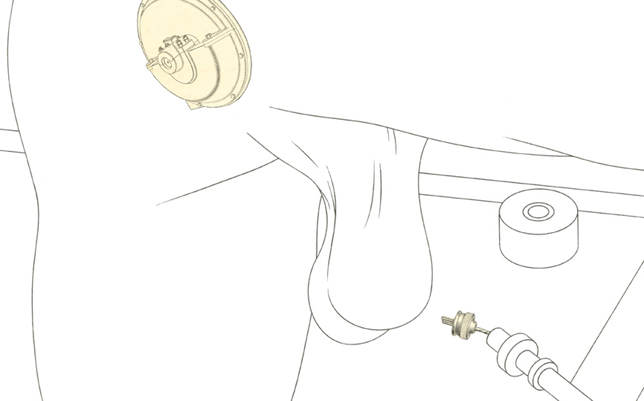
Fallen Skateboarder (detail)
2006, ink and collage on paper, 76 x 56 cm
Signed and inscribed reverse with title, date, catalogue no. MMXXVIII
|
º º º
º º º
|
|
As
we begin to touch upon the anus (!) and the body, it might do well
to interject and reflect on the way these drawings principally align
themselves with Western and Eastern erotic art in a fashion that
is not historically or contemporarily outré.
They are mediated and given context by the visible (and sometimes
invisible) traditions of both ‘sanctioned’ high culture
erotica and underground graphics, yet they can still cause shock
or ‘unease’ amongst a presumably informed, Twenty-first
Century audience.
It is insightful, and an indictment, that as a dominant culture
we still have few (or misaligned) entry points into works such as
Schranzer’s, or consciously choose to marginalize it; ask
that drawings such as these remain in the cabinet, the ghetto, or
the gallery that caters to the interests of those homo-erotically
inclined. Courbet’s woman in The Origin of the World
— explicitly posed and strong in sexuality — might cause
some embarrassment (the American tourist, flush-faced, shifting
uneasily from one foot to the other), but it is acceptable within
the erotic paradigms established by and for the male viewer and
most curators (on this subject there are analyses by feminists,
and insights by contemporary writers like Thomas Waugh on the erotic
gay visual subculture and its relationship to sexual and cultural
hegemonies). The decidedly fetishistic scene of a woman ‘strumming’
a young girl in Balthus’ painting The Guitar Lesson
of 1934 can also be made sense of and receives acceptance within
this sexual-politic of the gallery. This extends to the sensual,
mythological, theatrical or comic idioms of Picasso’s erotic
etchings and drawings, for — however on the brink of or indulging
in fornication or relaxedly post-coital his figures are —
they are heterosexual, conventionally masculine, male-centred imaginings
that don’t challenge the sexual orthodoxy.
A toy car shines its headlights onto the genitals of a hollow-eyed
girl in I was a little surprised to observe the mid-wife drive
up in a hot-rod, a 2002 drawing by Del Kathryn Barton, friend
and contemporary of Schranzer. Barton is also faced with some of
Schranzer’s challenges. Though she acknowledges the sexual
element of her artworks and their titillative potential, how does
she 'convince' some viewers that her drawings are not risqué-
or explicit-for-their-own-sake; not mere 'fantasies' giving the
public a sanctioned voyeuristic adventure; that her works do
move beyond the semiotics of ‘rather weird’ Playboy
illustrations (I mention the latter as Barton's nudes have a kinship
to Egon Schiele's emaciated, awkward, sometimes psychotic figures,
though at her more romantic and florid they evoke the sensual androgyny
of Mel Odom's illustrations for Penguin Books, and Playboy
and Blueboy magazines — straight and gay respectively
— that are referential to the Art Nouveau, and late C19th
Pre-Raphaelite and Symbolist and Decadent paintings). How does she
express to 'the few' or to the many that the drawings are autobiographical
and offer visual ruminations on ‘self’; explorations
that assist her to make sense of her ‘journey’, her
deep (and as it is for many of us a questioning and sometimes problematic)
connection to the physical world and all its modern paradigms, nature,
humanity, and spirituality. In her favour, beyond the aesthetic
and stylistic merits of the works, her subjects are female, and
the broader societal and gallery concord we have alluded to permits
them legitimacy; frames them sexually and artistically. In contrast,
if Schranzer’s more sexual drawings suffer under the public
gaze, it is not because they lack meaning, style, or beauty, but
that they suffer from phobias about male-to-male sexual expression
and objectification, or in the case of these specific drawings,
the depiction of the anus. Both still threaten social convention. |
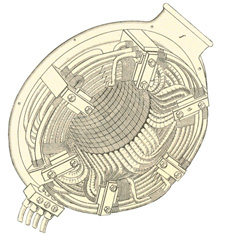
|
This
said, these anuses are far removed from the realism of pornography
or scientific illustrations. They are collaged sections from mechanical,
not sexual or medical treatises. In many regards they are inventions,
caricatures of, or embellishments on the anus — sometimes
whimsical (a ‘shunt-series’ anus or a meter measuring
‘frequency’) and at their most sexually provocative,
über-anuses far removed from any daily function: so why the
anxiety or embarrassment around these representations? They are,
after all, just one of many elements and signifiers within Schranzer’s
work, and like Barton’s, the drawings have a great authenticity
in the way they speak of ‘self’ — the physical
and the psychic — the ‘other’ — and of broader
human conditions (we will return to the subject of authenticity
later). Like those gathered under the banner of ‘Transgressive
Fiction’ — Georges Bataille, Charles Bukowski, William
Burroughs, et cetera, though admittedly with none of the emphasis
on violence, drugs, religion and politics that can be attached to
the genre — both Barton and Schranzer use the body as a vehicle
for gaining knowledge; searching for self-identity, inner peace,
‘freedom’ and resolution.
|
Skateboarder
(detail)
2006, ink and collage on paper, 76 x 56 cm
Signed and inscribed reverse with title, date, catalogue no. MMXV |
º º º
º º º
|
| In
conversation with Schranzer, it was established that many of the
studies for these drawings began their life in Sydney in 2003, before
a move interstate. This in itself might not warrant a mention, but
his relocation to the Gold Coast gives a context and currency to
these works. The fashion (well entrenched before Versace’s
provocative advertising of its low riding jeans) is for youths —
particularly surfers, skateboarders, and labourers — to wear
their pants without underwear, carefully whilst ‘carelessly’
low, half down the buttocks and just above the penis. This has been
jokingly referred to as the P&C, the ‘pubes and crack’
look! It is a sexually charged and socially transgressive act that
inspires few complaints from those with a voyeuristic predisposition,
but even for those without such tendencies it is nigh impossible
to halt the passage of the eye from the iliac line or the navel
down to the pubis! With such a high degree of exposure, they might
as well be surfing, skateboarding, or walking the streets and beaches
naked. The fashion suggests sexual confidence and availability,
but there is an accompanying coolness and self-awareness, meaning
these youths are unlikely to deliver up anything beyond their precociousness
and bravado.
If contemporary skateboarders, surfers, and athletes are icons of
youthfulness, idealism and faultless body development, it comes
as no surprise that Schranzer’s figures make reference to
classical sculptures, from the striding or steadfastly planted colossus,
to the semi-reclining or slain warrior. In many regards, a reference
to the Fallen Warrior (East pediment of the Temple of Aphaia)
is quite appropriate, for as the soldier has valiantly battled and
fallen against a foe, so has the skateboarder battled to perfect
a new trick or jump and in the process landed arse-up or on all
fours; a ‘toppled’ hero of sorts. Classical sculptures
are venerable, ideal, yet usually broken — missing heads,
arms, hands, and feet — and as so many Gods, Immortals, Satyrs,
Lapiths and Centaurs have found, their fate of being sans penis
unites them (Dionysus from the east pediment of the Parthenon,
Apollo on the west pediment of the Temple of Zeus, Praxiteles’
sculpture of Hermes). Schranzer’s youths also suffer
from amputations, or their exposed buttocks and pendulous scrotums
are displayed without sight of their penises. The erotic parts are
mechanical or absent, and any sexual readiness and heroic prowess
is slightly countered or refigured.
In respect of this, it is worth noting that in Schranzer’s
1997 publication Dichter-Zeichner his subjects are often
described as either ‘functioning’ or ‘maimed’,
enabled or disabled: “Ships float calmly out to sea, or are
beached or sunk,” and “sexual youths confront alter-images
of the malformed and sexually dysfunctional.”(3) So we can
recognize these skateboarders, machinists, athletes, and cyclists
in Le cul mécanique as handsome sexual archetypes,
athletic provocateurs, and ‘differently-figured’
transgressive outsiders. We also sense in them metaphors for Freudian
displacement, transference, introjection, and sublimation. They
have psychoanalytical and psychosexual dimensions. |
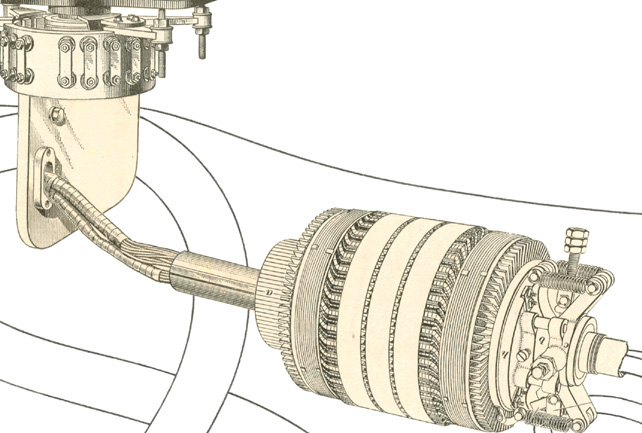
Cyclist with a Wheel-Repair-Kit
(detail)
2006, ink and collage on paper, 76 x 56 cm
Signed and inscribed reverse with title, date, catalogue no. MMXXIV |
º º º
º º º
|
But his asshole
sucked me right in…(4)
Alongside gloves, meters,
probes, pumps, springs, and ambiguous apparatus — inserted
or imminently so — are the anuses themselves. Quite the
novel invention, they might calculate, click over, whir and bop,
and occasionally take the form of plugs or stoppers. Certainly,
in aperture form, they not only give a fresh perspective on the
term sphincter but, as working and playing pieces of technology,
they have the pulling power to draw through, the capacity to shut
down, clamp around, dismember, grind, pulp, or extrude. This raises
many questions about the safety of inserting a finger or penis,
and despite the romanticising and fetishizing, they remain
in Schranzer’s works unknowns: pleasure centres
or danger centres; ‘sex-buddies’ who can be trusted
or Loreleis who lure men (literally) to their final end.
|
|
It might be tempting to tease out this pleasure/danger paradigm
and suggest a metaphoric relationship to our current viral world
and appropriate sexual behaviour and its consequences; however,
I cannot imagine this as part of Schranzer’s moral or psychological
scheme. It is more in keeping that these anuses represent his usual
polarities: the erotically fleshed versus the macabre and mechanical,
the working and the redundant, the functional and dysfunctional,
the nurturer or maimer, the loved and the unlovable. As the arses
and other objects are sourced from industrial treatises one hundred
years old (“books covering electrostatics and electrochemistry;
…generators and motors; railway construction and equipment;
steam-, gas-, and water-powered electric plants; telegraphy and
telephony; transformers, converters…”(5)) this position
is strengthened, for in their very ‘existence’ and appropriation
they are presented to Schranzer as precious utilities and resources
or as antiquated and obsolete representations.
Collage is a useful media for Schranzer as there are potential shifts,
ambiguities, and changes in polarity and meaning when source material
is transposed. He has said: “There is… beauty in the
characteristics and metaphysical qualities that are inherent in
these elements… which are not operational within the source
material while still in book form,” and that “elements
are disassociated from their original contexts to give… overtones
of original meaning” or a complete “displacement of
meaning, semantic transformation.”(6) It is obvious this shift
occurs in his representations of the anus: what were once machine
parts for engineer and plant speak of a new kind of sexual industry,
performance, and function.
|
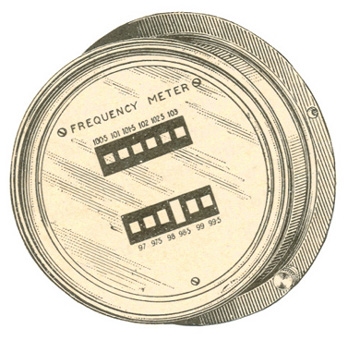
Two Skateboarders (The Crooked Truck)
(detail)
2006, ink and collage on paper, 56 x 76 cm
Signed and inscribed reverse with
title, date, catalogue no. MMXXII |
Max
Ernst expressed the sentiment that collage created "an electric
or erotic tension” by bringing into mutual proximity elements
that were foreign and unrelated, and that “discharges, high-tension
currents would result. And the more unexpected the elements brought
together, the more surprising… the spark of poetry that jumps
the gap.”(7) The use of mechanical parts for anuses (marrying
‘machine technology’ with flesh) and creating occasional
conglomerate sexual props (from unrelated ‘mundane’
parts) brings such erotic tensions. It is the choice of elements,
how and where they are placed and mixed, and what they newly assume
and signify that transforms the poetic and ‘electric’
function. |
|
º º º
º º º
|
| As
Schranzer’s youths blur the line between flesh and machine
they present to us as possible boy-automata. The concept
of an automaton whose actions are, by definition, repetitive and
routine — showing few emotions and performing without thought
— again elicits questions on the character and capacity of
these invented youths. In Young Skateboarder, the protagonist
with his one leg raised might well be caught in a private, playful,
and unselfconscious moment, but he might equally be assuming the
conscious (and oft repeated) sexual pose of the peep-show performer,
automatically waiting to be showered with silver dollars. His exposed
wares come, according to taste, with a fast or slow function!
Does sexual self-awareness and confidence lead to a deliberate stance
or attitude; does it lead to ‘repetitive’, even banal,
exhibitionism? Does a mechanical arse imply emotionless sexual appetite?
Presented faceless (when facial expression can often be a key to
decipherment), our Young Skateboarder’s unpretentious
romanticism, or his seasoned, conceited, narcissistic, even contemptuous
attitudes are difficult to establish. Having earlier discussed the
‘coolness’ of Schranzer’s line work and the implication
for his figures, this last reading could well be accurate —
that his youths are detached, knowing, and impersonal — but
there is still some ‘grey’ in the way that Schranzer
represents, and perhaps we, and he himself, cannot fully
establish whether or when they are warm or cool, hot or cold. |
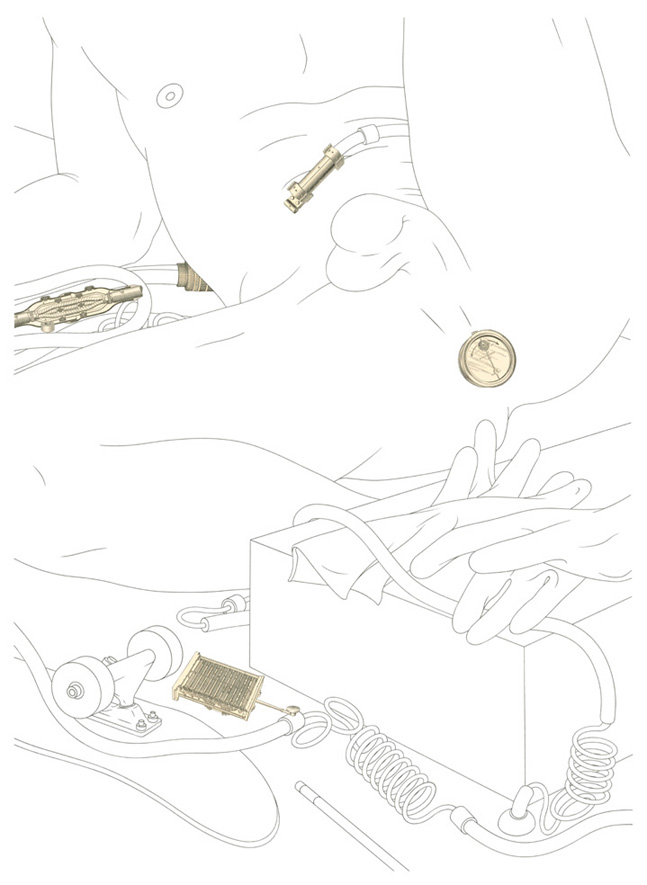
Young Skateboarder
2006, ink and collage on paper, 76 x 56 cm
Signed and inscribed reverse with title, date, catalogue no. MMXIX
|
| The
surrealists were fascinated with automata because of the animate/inanimate
conundrum, and the ‘slip’ between the perverse and the
banal. The theme was well developed in Hans Bellmer’s photographs
of assembled mannequins, and a brief look at his work can establish
some differences, confluences, and possibly locate, from a Freudian
perspective, the genesis of Schranzer’s men.
In Bellmer’s photographs his dolls are female and figured
as a “skeletal automaton, a coy adolescent, or an abject pile
of discombobulated parts.”(8) They are variable material amalgamations,
complex and often disturbing. His drawings (for example, Iridescent
Cephaloped, 1939) also express perverse and sadistic undertones:
‘dolls’ and ‘Lolitas’ are subjected to contortions,
superimpositions and reorganization of their erogenous zones, and
are clearly framed within a world of erotic experimentation —
vaginal, anal, and oral. They are thus presented as hyper-sexualized
if not voracious hybrids, or inert mannequins and dolls in a state
of suspended psychic and physical power. Schranzer’s youths
are post-adolescent, expressed as active, idealized (given their
status as skateboarders and athletes) and retain a humanity of sorts,
in that they have not been the subject of gross distortion and bodily
reorganization; will never be composites in the same astonishing
vein — nor reach those perverse heights — of Bellmer’s
figures. In the parlance of Blade Runner they have a sense
of the ‘replicant’. Even amongst the most feverishly
pitched works of Bellmer, what they share in common is an outsider’s
fetishism; a sense of voyeurism rather than participation. Further,
in both bodies of work there are elements of ambiguity in the degree
and combination of emotional, psychic, and physical function, innocence
and corruption, normality and abnormality.
Sue Taylor speaks of Bellmer's dolls developing out of a “series
of three now legendary events in his personal life,” one of
which was the “reappearance of a beautiful teenage cousin.
…Overwhelmed with nostalgia and impossible longing, Bellmer
acquired from these incidents a need, in his words, ‘to construct
an artificial girl with anatomical possibilities... capable of re-creating
the heights of passion even to inventing new desires’."
Given a change in gender, is a type of longing and nostalgia a conditio
sine qua non for Schranzer’s development of his youths?
Bellmer “imagined little girls engaged in perverse games,
playing doctor in the attic; he meditated… on… ‘the
casual quiver of their pink pleats’; and he despaired ‘that
this pink region,’ like the pleasures of childhood itself
enjoyed in the maternal plenitude of a ‘miraculous garden,’
was forever beyond him.” Are Schranzer’s youths with
their pleasure zones — engaged in sport or playing doctor
(the Cyclist with a Wheel-Repair-Kit) — beyond his
reach, and if in reach, are they truly, wholly available?
Taylor also reminds us in her analysis of Bellmer’s dolls
that the “capacity for displacement and the acceptance of
surrogates, Freud stated, enables individuals to maintain health
in the face of frustration.”(9) Are these drawings then the
result of frustration? Are these youths surrogates? How do the psychosexual
fictions and mythologies converge with the lived reality, and how
do the imaginings and the truths ‘fire’ the art? |
|
º º º
º º º
|
| If
these drawings have an apparent sexual element, it is also clear
they have a strong spatial dimension. This statement is advanced
to remind the viewer that Schranzer’s drawings have many attributes
that make for gainful discussion, though we have largely focused
on the sexual and psychological nature of his work. Of course, space
is not just about formal placement and distance; space is about
psychology.
Schranzer employs an intriguing spatial system — a fusion
of systems — that brings to mind De Chirico’s anomalous
spaces. In his essay, Wieland Schmied suggests that “the pictorial
means that de Chirico employs are all directed towards a single
end: to disconcert, to delude, and unsettle the viewer. He begins
with a space that apparently cannot exist, achieved by reversing
such classical organizational principles as linear perspective in
a disruption of the spatial continuum of Renaissance painting, [using]
several vanishing points within one image…. Often foreground,
middle, and backgrounds are undetermined planes that have remote
relationships with each other; perceivable as a sequence of planes
in depth, but arbitrarily stacked with no connecting space between
them. …Such devices give rise to discontinuity and disequilibrium,
incongruity, and incoherence.”(10) Schranzer looked to De
Chirico’s paintings in the 1980s and 90s, so it not surprising
to find vestiges of influence. Schranzer’s drawings have subtly
conflicting perspectives, made more apparent by trying to marry
the various ‘convergences’ of objects he has sourced
for collage. There are indeterminate spaces between elements in
fore, middle, and distant ground as his linear style does not allow
for atmospheric perspective, and passages left empty — ‘white
space’ — come into spatial play. There are ambiguous
or subtly competing scales of objects.
It is, however, not just the use of contradictory vanishing points,
but also the use of parallel projections (axonometric for instance)
alongside them that creates a degree of incoherence. There are also
Oriental views with a high viewpoint, producing strong diagonals
and flat though slanted ground planes, and there are Degas-like
low viewpoints (worm’s-eye views) that allow the spectator
to voyeuristically take in the body, the buttocks and the anus.
When Schranzer does use a middle-level Albertian view, he still
creates spatial diversions and plays, even if subtle.
Perhaps Canaletto would be disappointed by Schranzer’s artifice
— though all spatial systems are an artifice of sorts —
and an engineer highly critical of an object’s plausibility
and structural integrity, but they are deliberate misrepresentations
that further the metaphors of disquiet and dysfunction. |
º º º
º º º
|
| In
closing, Schranzer’s drawings have an authenticity.
This is not meant as a statement on their originality, though they
do have uniqueness, charisma, and a signature aesthetic
and use of line. They are authentic because Schranzer has the conviction
and trust to explore his personal world in the largeness of
things — to express the sexual and psychological ‘known’,
and the ‘mystery’, to establish a truth, however that
truth might shift, mutate, or blur with fantasy. In this search,
he does not bow to fashion, norms, moral impositions, and the fear
of how others might read, respond, dismiss (or blush and shift feet).
Authentic is creating without an audience in mind. Authentic
is about truth, essence and core. Authentic is not a function
of the ordinary.
Moses Langtree
Hulme, Lancashire, and Sydney 2006
NOTES
1.
William Burroughs, The Soft Machine, Paladin, 1986 London.
2. Georges Bataille, “Alleluia,” Vol. 2, sect. 4, La
Somme Athéologique, Guilty, 1944.
3. Kurt Schranzer, Dichter-Zeichner, exhibition catalogue,
1997 Sydney.
4. William Burroughs, op. cit.
5. Kurt Schranzer, A Gentleman’s Fancies, artist’s
statement, 1999 unpublished.
6. Kurt Schranzer, Ibid.
7. Werner Spies, Max Ernst: Collages, Thames and Hudson,
1986 London.
8. Sue Taylor, Hans Bellmer in The Art Institute of Chicago:
The Wandering Libido and the Hysterical Body, Department of
Art History, The University of Chicago http://www.artic.edu/reynolds/essays/taylor.php
9. Sue Taylor, Ibid.
10. Wieland Schmied, “De Chirico, Metaphysical Painting and
the International Avante-garde: Twelve Theses”, in Emily Braun
(ed), Italian Art in the Twentieth Century, Prestel-Verlag,
Munich and Royal Academy of Arts, 1989 London. |
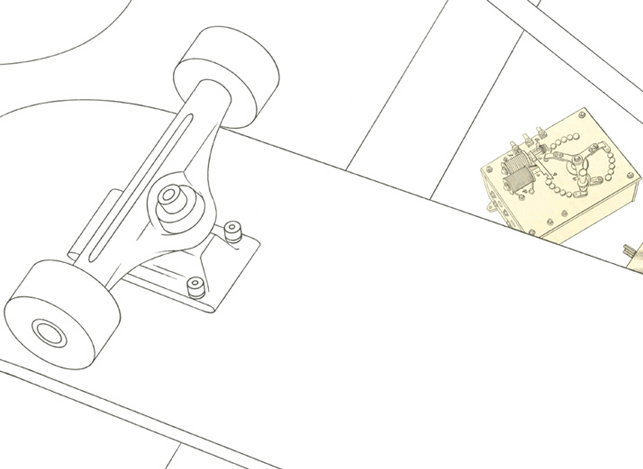
Fallen Skateboarder (detail)
2006, ink and collage on paper, 76 x 56 cm
Signed and inscribed reverse with title, date, catalogue no. MMXXVIII
|
NOTE: Due to the low resolution of computer screens, the lines
of these drawings will present as slightly pixelated. A 'jagged'
quality will be particularly evident on some diagonals and curves;
fine black ink lines will appear faint and tend towards grey on
screen.
|
| |
|
© Moses Langtree and Kurt Schranzer 2007
|
|

